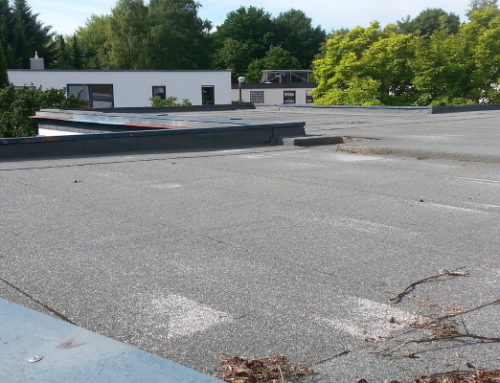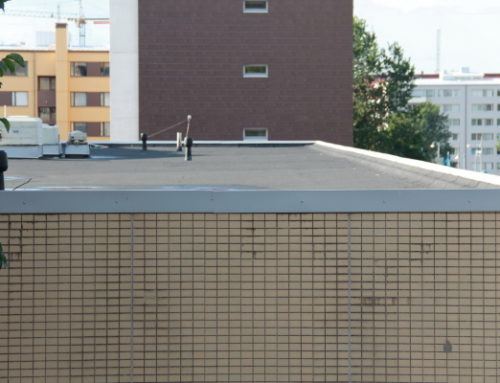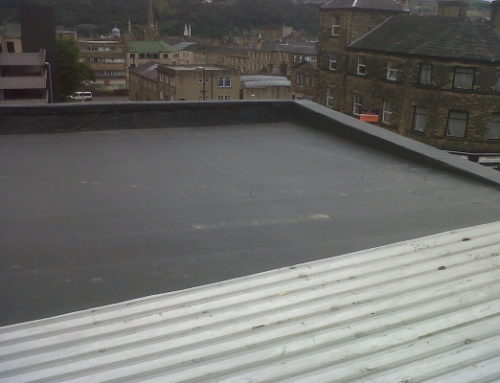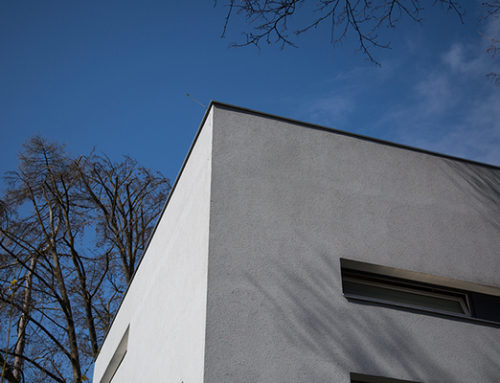Business and property owners in Clinton Township will need a flat roof repair and replacement sometime in the near future. True enough, single-ply materials require different solutions to its problems. However, a professional roofer can deal with any TPO roofing problems properties can have.
On the other hand, it pays to know that single-ply membranes can be damaged severely even with the best installations and replacements. Then again, no commercial roofing material is perfect — each one has its flaws and strengths. Over time, each one will suffer damages as it ages and endures the elements.
In this short guide, you’ll know about the vital damages a single-ply membrane roof can suffer and how to minimize the risk of it happening. In addition, it pays to know that having professional contractors in Clinton Township MI with in-depth experience in installing commercial flat roofing materials will make every problem in this post extremely easy to handle.
Single-Ply Roofing Problems You Need to Know
- Membrane Puncturing
- Adhesive Degradation
- Heat Shrinkage
- Poor Installation
- High Foot Traffic (+ 6 more)
Single-Ply Membrane and TPO Roofing Problems Causing Massive Damage in the Future
Easily-Punctured Membrane
True enough, TPO roofing problems do not start from the material itself. All single-ply membranes underwent rigorous manufacturing, reinforcement, and quality tests. However, each one cannot promise 100% that it can live through its entire lifespan — or endure other problems that can cause massive damages.
Without a hard-top layer, any single-ply membrane can puncture from loose gravel, stepped-on screws, or dropped sharp or edged heavy tools. Indeed, PVC is the only likely exception because it can withstand high foot traffic and has a semi-hard top layer.
To prevent puncturing, remember to keep nearby tree limbs short. Next, regularly clean your roof system to avoid TPO roofing problems and others.
Swift Adhesive Degradation
UV ray heat is every single-ply membrane’s worst enemy. True enough, you’re not going to face TPO problems with traditional materials such as asphalt shingles, slate, and clay tiles. Single-ply membranes use adhesives installed on cleaned and smoothened membrane boards. However, some PVC and TPO products use case-specific heat welders for airtight seals.
Therefore, a common EPDM and TPO membrane issue is loose adhesives. UV rays and the sun’s heat can degrade the peel and stick adhesive quicker than you expect. Deteriorated adhesives will expose the adhesive board and allow water to seep into and cause internal leaks.
Related: Asphalt Shingles and Metal Roofs: All You Need to Know for 2019
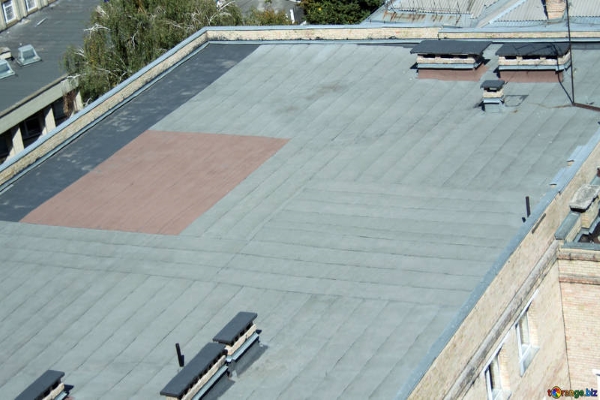
TPO shares a rubber base with EPDM. However, it is highly durable and can handle UV rays better.
Heat Shrinkage
UV rays and heat do not only loosen adhesives. Prolonged exposure causes single-ply membranes to shrink and crack in some cases. In fact, it is the number-one contributor to massive TPO roofing problems.
True enough, working with a reliable material manufacturer is crucial in preventing single-ply membrane adhesive and shrinkage problems Furthermore, a heat-welded installation guarantees both an airtight seal and significant UV ray protection. The expanded and melted material thoroughly reflects UV rays and prevents possible damages.
However, it pays to know all single-ply membranes suffer from minor shrinkages. However, a roofer can anticipate these changes and make correct seam changes efficiently to prolong its lifespan.
Poor Installation
Many details can go wrong during the installation of single-ply membranes that can cause long-term TPO roofing problems.
If the roofers fail to cut the right seam size, the membranes will create gaps that winds and other factors can cause. Contractors who fail to adhere the material or weld it with the proper machine may cause insufficient melting or over-melting. The latter damages the membrane attachment board and can cause severe structural damage too.
However, perform the installation correctly, and your single-ply membranes can provide superior roofing protection and minimal maintenance.
Unanticipated High Foot Traffic
EPDM or rubber roofs are extremely vulnerable to high foot traffic. Tough rubber synthetics and plastic soles can puncture through membranes and cause damages. However, using protective mats to prevent TPO roofing problems is one way to prevent high foot traffic.
Next, you can block off your rooftop passage with a lock. Unless you have a green roof or rooftop garden, only allow maintenance personnel to head up to your roof to minimize foot traffic at all times.
Performing a Proper Single-Ply Membrane and TPO Roofing Installation
Membrane Attachment
Make sure to clean all membrane attachment boards. Adhesive can only stick efficiently with a dust and debris-free membrane. You can use a broom to sweep off the fragments.
In addition, never peel off the adhesive protector of your membrane. If left exposed, the adhesive can degrade fast and trap airborne debris preventing it from sticking properly.
Seam Size and Amount
Measure the entirety of your roof accurately. Give a 2-3 inch border allowance to permit membrane overlapping. In doing this, you achieve excellent seam protection that prevents possible leak occurrence.
Observe this same process when working with welded materials. You achieve excellent insulation and welds when you have the right seam size all the time.
The Right Welder for Any Occasion
Different membrane thicknesses require the right amount of heat. Fortunately, manufacturers brief roofing contractors about the melting point of their membranes. Therefore, contractors can set the right amount of heat or use adequately powered welders that guarantee accurate results.
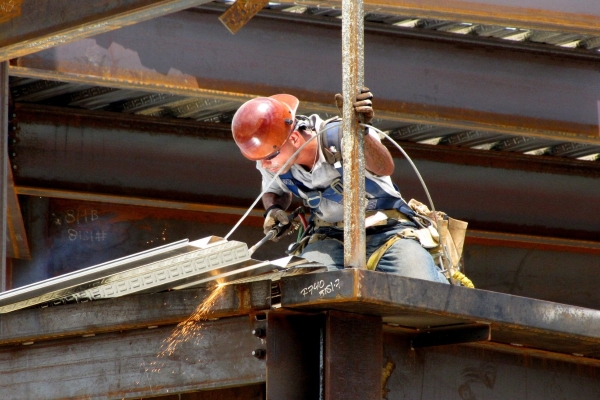
Just like metal roofs, some PVC and TPO materials use heat welds for installation.
Final Inspections
Once finished, you must check all areas for loose adhesives or material that hasn’t melted properly. Careful inspections will reveal small flaws that could evolve into huge problems at short notice. Make sure to work with a reliable contractor to find all your roofing problems and fix them as quick as possible.
TPO Vs PVC Roofing
TPO is a relatively new roofing material with only a 15-year history. In addition, it is weak perceivably because manufacturers have revised and improved the material continually due to numerous product setbacks.
PVC has a long-track record of existence of 20-years. Furthermore, it has minimal revisions to its base product, but it has seen progressive improvement over the years. On the other hand, it is far more expensive to own a PVC roof than TPO.
Between the two, PVCs are an excellent option for properties with heavy HVAC and other units on their roofs. PVC has a 300 pounds per inch weight support limit. However, TPO is an economical solution that reflects UV rays better than EPDM, but not as durable and efficient as PVC.
Related: Commercial Aesthetics With TPO Flat Roofs
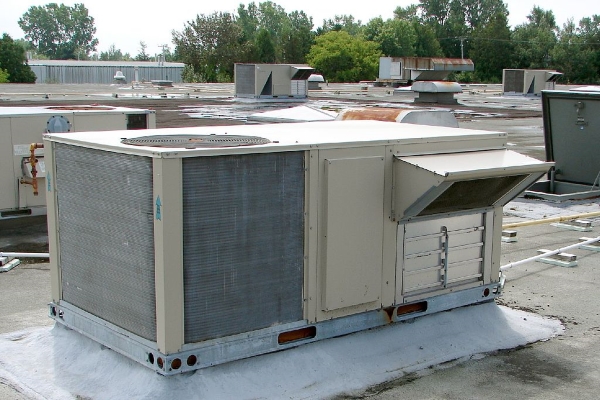
PVCs can carry heavy equipment on roofs without any problems because of its 300 PPI capacity
Making Sure You Have Excellent Single-Ply Membrane Installations and Maintenance
Single-ply membranes have their respective flaws that a proper installation can resolve and minimize. Nipping the problem in the bud requires the right set of equipment, expertise, and experience in doing so.
Miller’s Home Improvement is a Clinton Township roofing contractor servicing commercial properties in Clinton Township’s central business district for more than a decade. We perform honest and professional work with the right tools and educated personnel for the job. Contact us today for any commercial roofing service you need!



